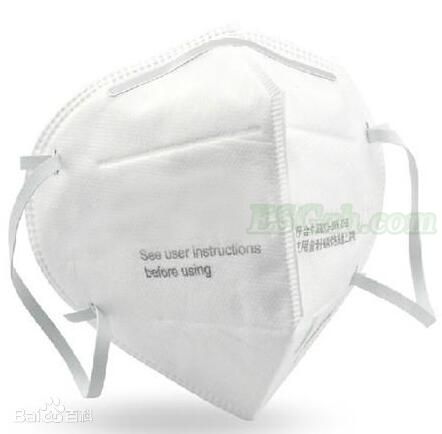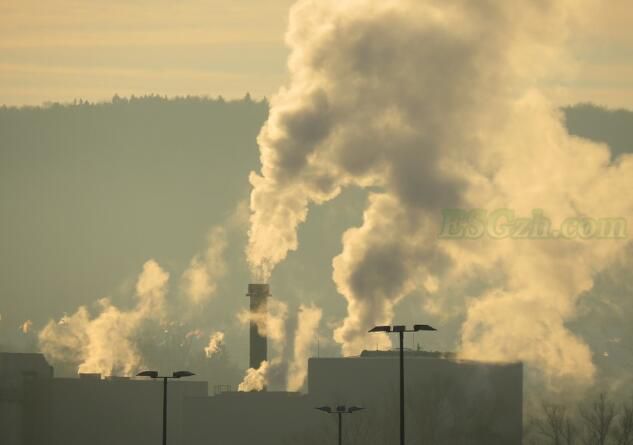

The N95 mask has a filtration efficiency of more than 95% for particles with an aerodynamic diameter of 0.075µm ± 0.02µm. The aerodynamic diameter of air bacteria and fungal spores mainly varies between 0.7-10µm, and it is also within the protective range of N95 masks. Therefore, N95 masks can be used for respiratory protection of certain particulates, such as dust generated during grinding, cleaning and processing of minerals, flour and certain other materials. It is also suitable for liquid or non-oily non-production caused by spraying. Hazardous volatile gas particles. Can effectively filter and purify the inhaled abnormal odors (except toxic gases), help reduce the exposure level of certain inhalable microbial particulates (such as mold, anthrax, tuberculosis, etc.), but cannot eliminate contact infection, illness or death risks of.
Precautions for use
Wash your hands before wearing a mask, or avoid touching your face with the inside of the mask during wearing the mask to reduce the possibility of the mask being contaminated.
Distinguish the inside and outside of the mask, and up and down.
Do not squeeze the mask with your hands. The N95 mask can only isolate the virus on the surface of the mask. If you squeeze the mask with your hands, the virus will wet the mask with the droplets, which will easily cause virus infection.
Try to make the mask fit tightly to the face. The simple test method is: after putting on the mask, exhale hard, and air cannot leak out from the edge of the mask.
The protective mask must be close to the user's face. The user must shave his beard to ensure that the mask can fit on the face. The beard and anything placed between the mask seal and the face will cause the mask to leak.
After adjusting the position of the mask according to your face shape, apply forefingers with both hands to press the nose clip along the upper edge of the mask to make it close to the face.
Masks should be replaced in time when:
When the respiratory impedance increases significantly;
When the mask is damaged or damaged;
When the mask cannot be tightly attached to the face;
Masks are contaminated (for example, when stained with foreign matter such as blood or droplets);
Masks have been contaminated (have been used in individual wards or patient contacts);
If it is a mask containing activated carbon, and there is an odor in the mask;
Masks have been used longer than recommended.
Performance limitations
Respiratory diseases are not only transmitted through the respiratory tract;
Preventive measures should precede exposure;
The tight structure and efficient filtering of the mask will increase breathing resistance and reduce comfort;
If the mask design is not suitable for the user's face shape, it will affect the suitability and will cause leakage;
Under the requirements of suitability and correct use, protective masks can effectively reduce the concentration of harmful substances by 90%;
The government has not established safe exposure limits for pathogenic microorganisms. Respiratory protection can only reduce the risk of disease, but it cannot eliminate the risk.
Choice of masks
Choose the right mask
Medical protective masks should be the first choice for medical workers, and ordinary degreasing gauze masks should be the first choice for ordinary citizens to use in their daily lives. In special occasions, such as visiting doctors and visiting patients, it is better for ordinary citizens to choose medical masks.
Choose a qualified mask
When choosing a mask, you need to see whether there is a trade name on the package, whether there is information about the manufacturer or supplier, whether there is a mask certificate or instructions for use. Disposable masks must also have a one-time identification, and reusable medical protective masks must also indicate the method of sterilization. In general, ordinary gauze masks must be marked as normal or disinfected. The materials used for masks should be free of odors and harmless to the human body, especially those in contact with the human face. They should be non-irritating and allergic.
Don't forget to check the appearance when choosing a mask
This is a problem that we tend to ignore when choosing a mask. First of all, we must check whether the packaging of the mask is complete and whether it is damaged. There must be no holes or stains on the surface of the mask. Medical protective masks should not have exhalation valves. For close-fitting arch masks, the lateral diameter is not less than 14cm, and the longitudinal diameter is not less than 14cm. The length of the medical protective rectangular mask is not less than 17cm, and the width is not less than 17cm. The number should not be less than 12 layers. In addition, we must remind everyone that if you choose a medical mask, remember to have a nose clip. The nose clip is made of bendable plastic material and the length is not less than 8.5cm.



国务院办公厅关于印发新污染物治理行动方案的通知【国办发〔2022〕15号】









习近平在2020气候雄心峰会上的重要讲话 正式宣布碳排放与新能源装机新目标
